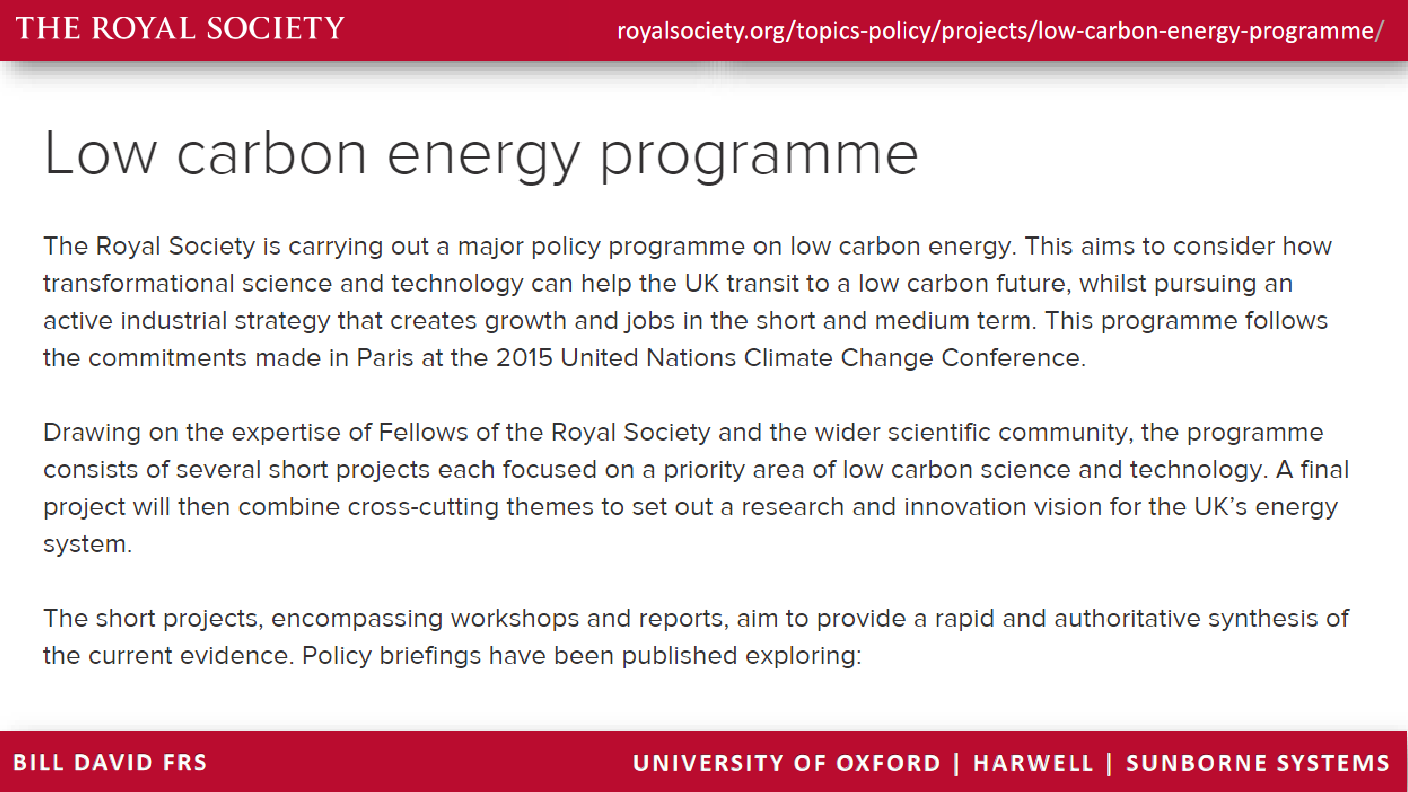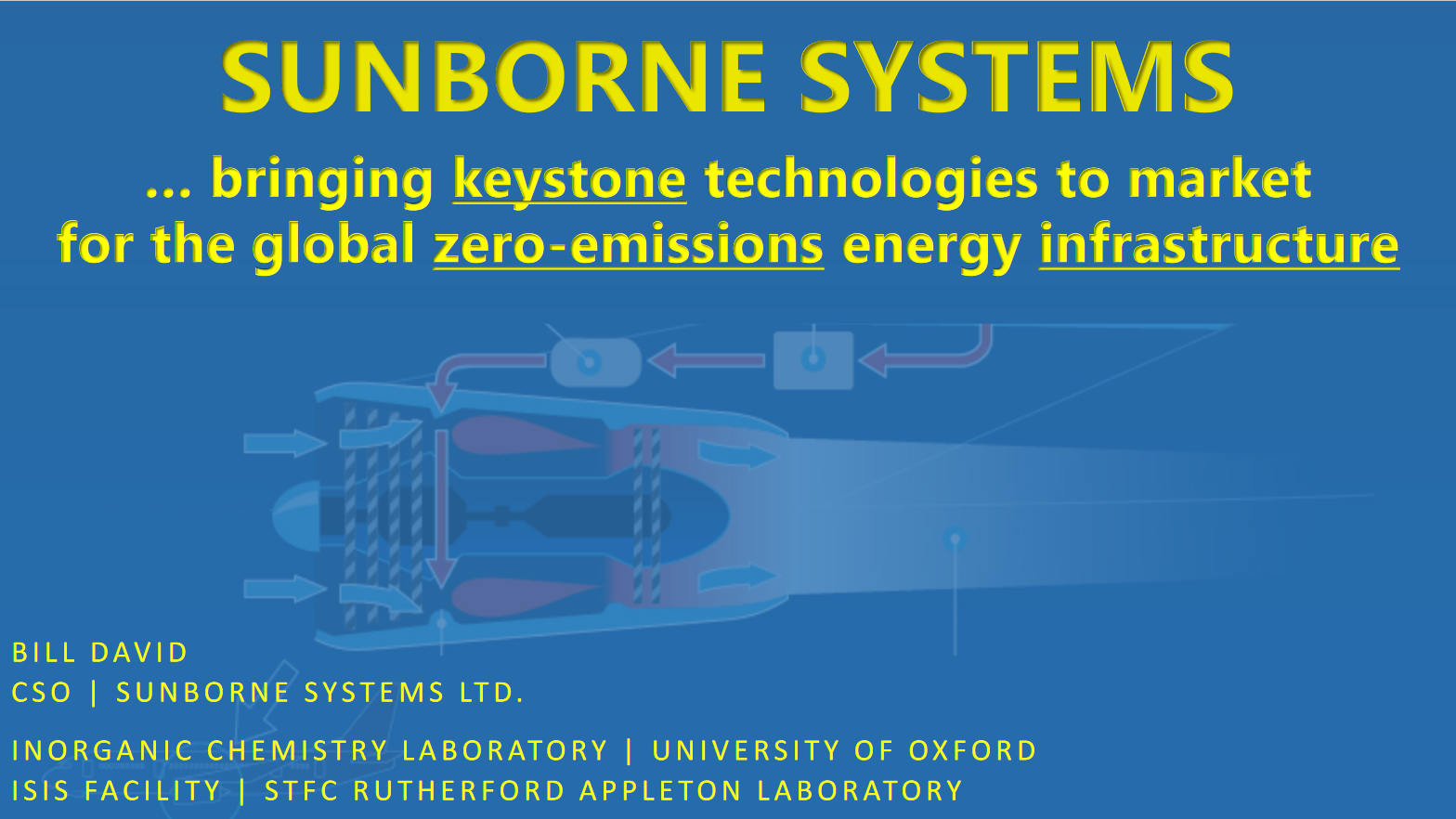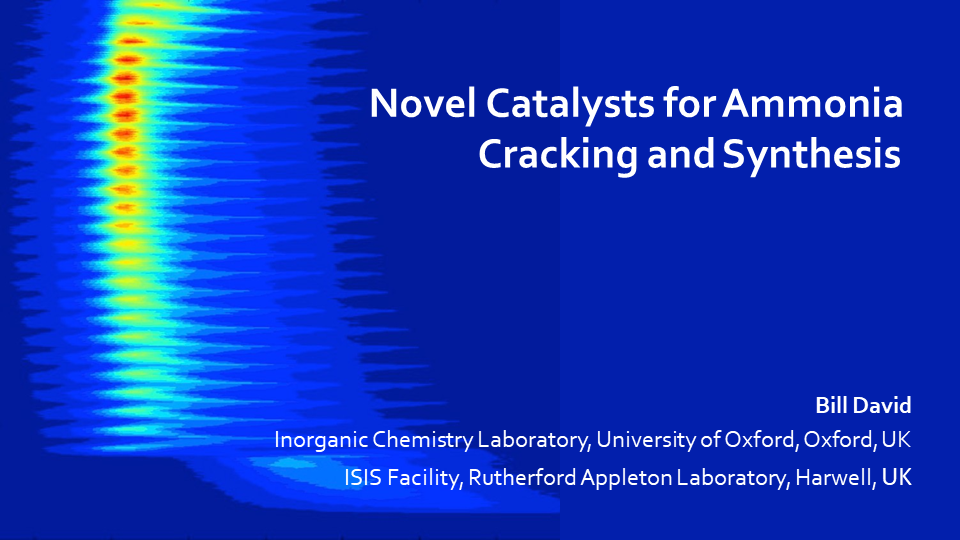Content by Author
Presentation
Sunborne Systems: bringing keystone technologies to market for the global zero-carbon energy infrastructure
At Sunborne Systems, we are developing zero-carbon ammonia-based solutions for heavy transport and high-energy industrial applications. Our keystone technologies are initially focussed on early opportunities in the maritime industry and have high disruption potential across multiple other hard-to-abate sectors. Sunborne Systems was announced a year ago at COP26 in Glasgow and is a joint venture technology company formed by STFC, Reaction Engines and IP Group building upon the technical strengths of Reaction Engines and STFC in thermal management and catalyst chemistry and their in-common expertise in system design and optimisation.
Presentation
Ammonia as a Carrier of Hydrogen Fuel
Ammonia as a Carrier of Hydrogen Fuel Bill David, University of Oxford
Presentation
Novel Catalysts for Ammonia Cracking and Synthesis
The most effective ammonia cracking catalysts are currently based on rare metals such as ruthenium and cobalt. While iron can efficiently crack ammonia at 600 °C, it is desirable to develop similarly inexpensive catalysts that are effective at lower temperatures between 350 °C and 500 °C. In this presentation, a new family of imide-based catalysts are described that crack ammonia around 400 °C to 550 °C. These materials do not behave as conventional surface-based catalysts and offer an affordable route for on-board cracking of ammonia for hydrogen fuel-cell cars. The operational parameters of a small 50W lab-based demonstrator will be…
Presentation
Cracking ammonia
In this talk, I will discuss our latest research in developing novel ammonia cracking catalysts. While ammonia can be used directly as a fuel in high temperature fuel cells, internal combustion engines and gas turbine, the ability to crack ammonia affordably and effectively increases the range of possibilities for utilising ammonia as an energy vector. For example, the production of an ammonia-free hydrogen/nitrogen gas mixture permits the consideration of ammonia as an on-board hydrogen storage option for transportation. Furthermore, the ability to partly crack ammonia provides an increased flexibility for internal combustion engines. I will outline developments in our search…
Presentation
Ammonia for low-temperature fuel cells
Ammonia for low-temperature fuel cells Bill David, ISIS Facility, Rutherford Appleton Laboratory / Inorganic Chemistry Laboratory, University of Oxford
Presentation
Investigating and Understanding Ionic Ammine Materials
Ammonia has been promoted as a viable candidate as an indirect hydrogen fuel vector, due to its high hydrogen content (17.8 wt%) and its ability to store 30% more energy per liquid volume than liquid hydrogen [1]. Ammonia can be safely stored in very high gravimetric and volumetric density in solid state halide materials [2-3], for example, at 109 gL-1 for Mg(NH3)6Cl2 compared to 108 gL-1 for liquid ammonia. These solid state ammonia coordination complexes, known as ammines, have attracted much recent attention (for examples see [4-5] and references there within) with a view to their use as solid state…
Presentation
A novel approach to ammonia decomposition
This talk discusses a new type of process for the cracking of ammonia (NH3) that is an alternative to the use of rare or transition metal catalysts. Effecting the decomposition of NH3 using the concurrent stoichiometric decomposition and regeneration of sodium amide (NaNH2) via sodium metal (Na), this represents a significant departure in reaction mechanism compared with traditional surface catalysts. In variable-temperature NH3 decomposition experiments, using a simple flow reactor, the Na/NaNH2 system shows superior performance to supported nickel and ruthenium catalysts, reaching 99.2% decomposition efficiency with 0.5 g of NaNH2 in a 60 sccm NH3 flow at 530 °C.…







